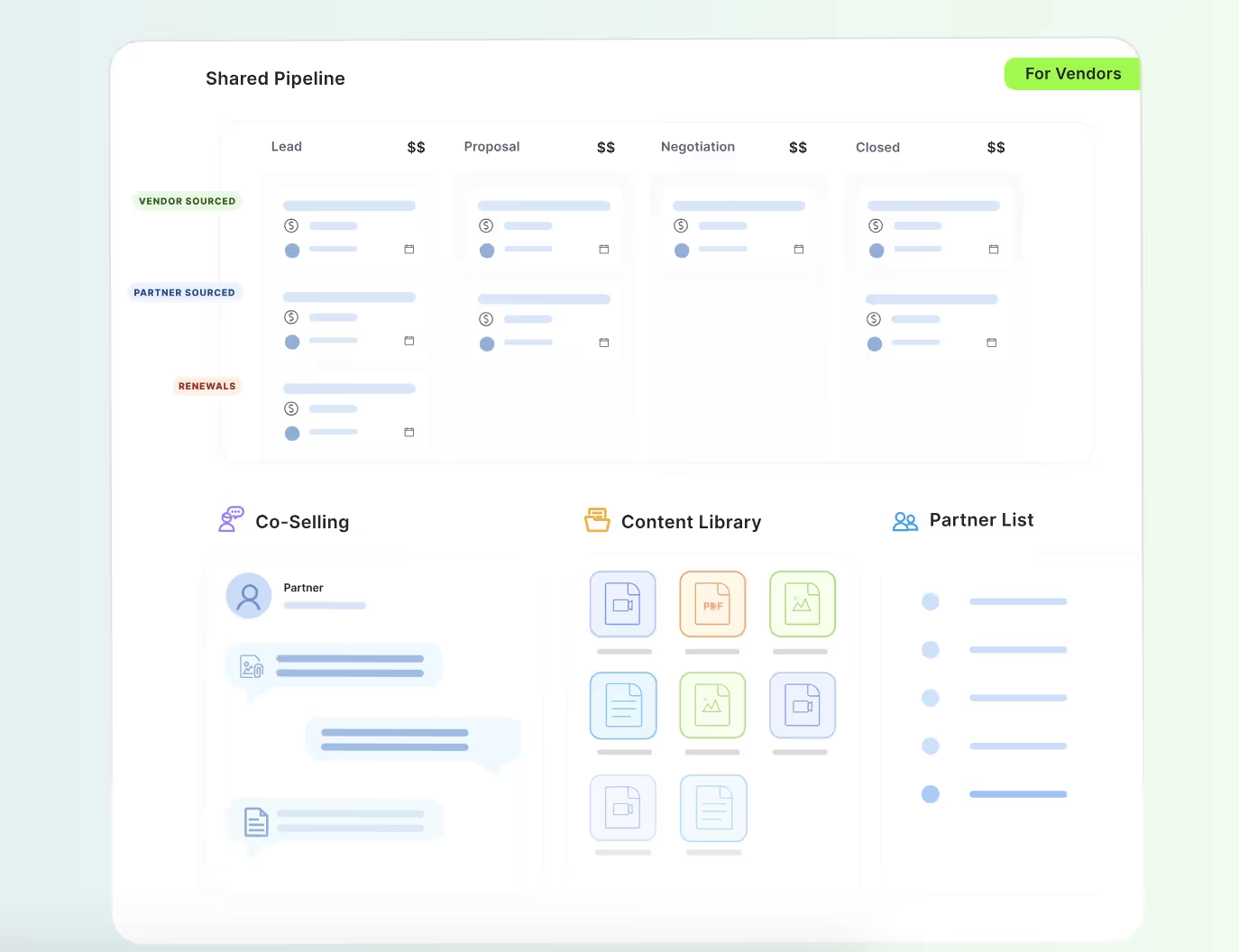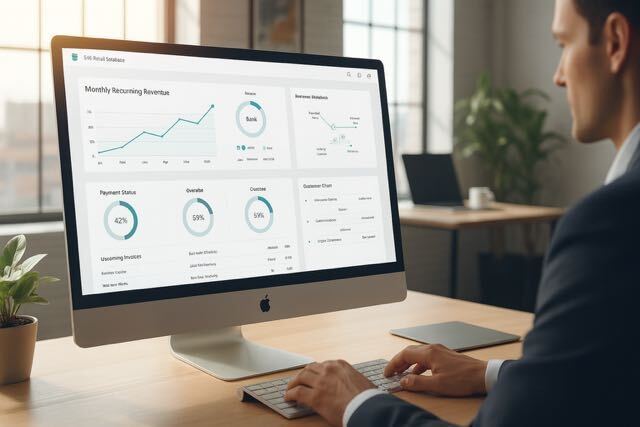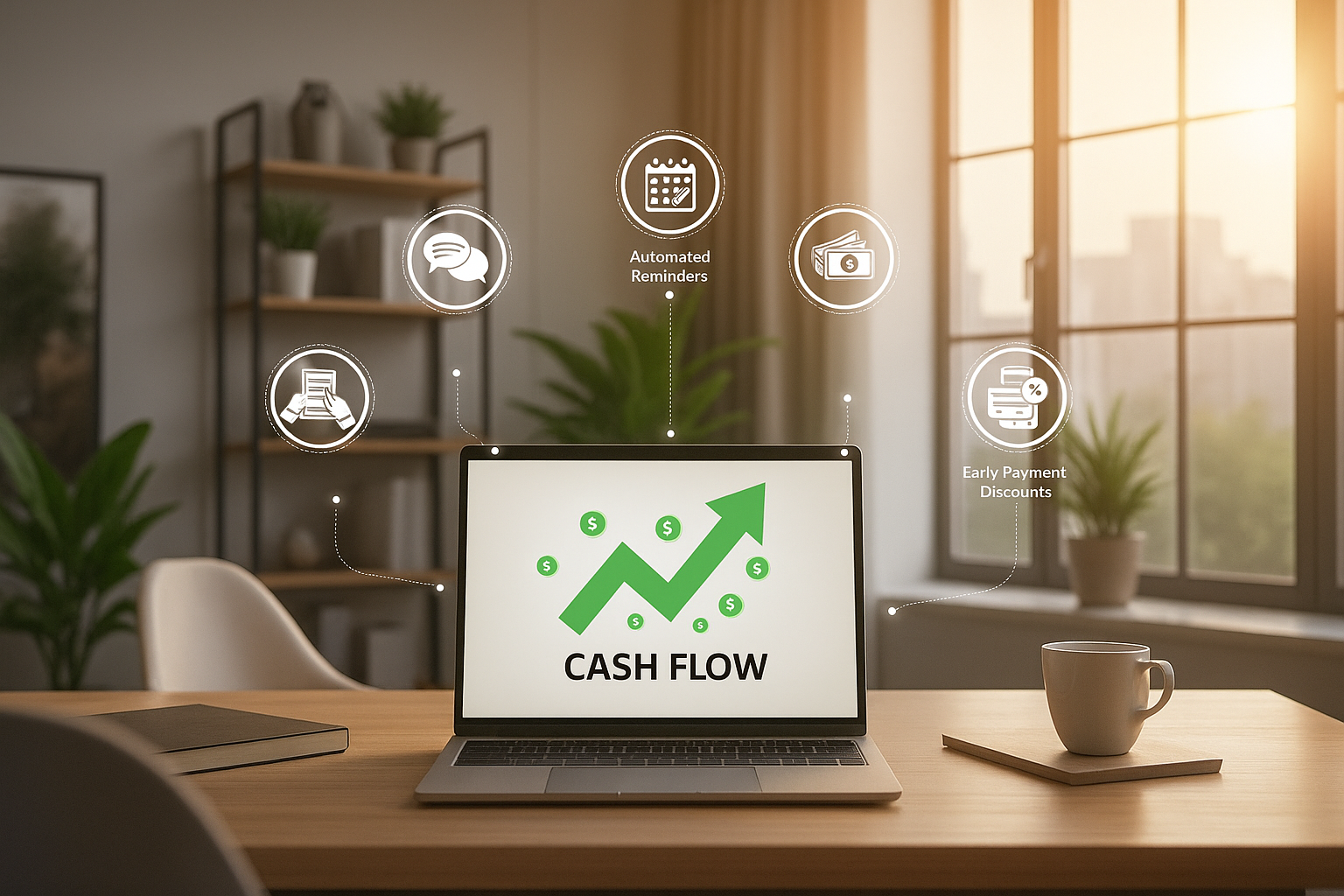7 Key Components of Channel Partner Onboarding

Effective channel partner onboarding can make or break your partner relationships. In this article, we break down the seven key components for successful onboarding.
How are your channel partners working for you? For many SaaS companies, their partners help them generate channel sales revenue each year. Effective channel partner programs start with a well-organized partner onboarding program, effective partner sales training, and a successful partner program.
Yet, many other SaaS companies don’t fully understand the benefits of a structured partner onboarding process. The onboarding framework for a robust channel partner can positively influence your partners’ performance because of it:
- Ensures compliance with internal policies and external protocols
- Reduces transactional workloads on your teams
- Boosts productivity and collaboration
Onboarding a new partner requires at least one month. And if you have multiple channel partners, manually developing individual workflows and data pipelines for them can be complex, requiring up to three or more months to onboard them.
Regardless of the time you need, encouraging and supporting your new partners in generating more sales starts with an effective onboarding plan. Get started by creating an onboarding schedule that includes these seven key components.
Download Template | Channel Partner Onboarding Template
What is Partner Onboarding?
Partner onboarding refers to the process of providing your partners with the skills and knowledge they need to become successful at selling your product or service, as well as helping your end clients or customers put them to work.
Common Pitfalls in Channel Partner Onboarding
While SaaS companies do their best to select partners when working on long-term collaborations, there are a few pitfalls that they end up in while onboarding them. Here are the most common ones:
Complete context sharing
When onboarding a partner, it becomes difficult for businesses to share the complete context of the product/ service. Unless they have well-built and shareable documentation, much context can get lost in conversations on emails, meetings, and other channels.
Managing exchange of data
As a partner starts to work on reaching out to prospects, it also becomes more challenging to manage the exchange of data with the SaaS company. From the outreach, conversations, sales funnel stage, apprehensions, lead details, and more, a lot can be lost if there isn’t a well-integrated CRM with the partner management platform.
Support and success to end-clients and customers
Due to the inability to understand products/ services in totality, many partners rely on the vendor to provide support and success. This may lead to increased turnaround times when addressing concerns and queries.
Mapping customer success
Since the front-facing party is the partner, most vendors must catch up on a customer's success. This results in losing opportunities to upsell and cross-sell products/services based on their objectives and goals. And that can impact how sticky the product/service remains.
Monitoring impact
Considering the above, this also makes monitoring impact harder for partners and vendors. This can be the impact on the end client or the effect a partner has on the vendor’s business growth.
Optimizing the sales funnel
With broken visibility on the relationship between the partner and the end client/ customer, it becomes harder for vendors to optimize the sales funnel.
The Role of Technology in Channel Partner Onboarding
So far, businesses have relied on manual conversations to manage licenses, permits, commissions, and the overall relationship with their channel partners. The amount of manual effort is usually what leads to data and revenue slipping through the cracks. But technology is changing that!
Platforms like Zomentum are helping businesses establish more vital channel partners by consolidating all critical functions of the relationship in one place.
From managing vendor licenses to keeping a close watch on sales pipelines to enable partners to close more deals, Zomentum offers it. This helps ensure success at all touchpoints and for all the parties involved, keeps data secure, and makes it possible to scale relationships with transparency.

7 Key Components of Partner Onboarding
Give your partners the information and assurance they need to represent your brand and generate revenue. Start with these seven components.
1. Welcome Partners to Your Partner Program
First impressions don’t allow for do-overs. So, make a positive first impression by welcoming partners to your program with a welcome kit. This initial contact is essential to show your involvement in the process and proactive communication.
In your channel partner welcome package, include various materials corresponding to your solutions to give them a running start. These materials often comprise the following items:
- Welcome letter
- Table of contents
- Kick-off call and onboarding schedule
- Internal and partner onboarding checklist
- Overview and benefits of your solutions
- Partner program framework and, if applicable, perks by tier
- Guidelines and features of your partner portal
- Training and certification courses that partners must complete to sell or use your solutions
- Overview of customer-facing materials and sales and marketing tools
- FAQs
- Information on how to reach channel managers, sales representatives, marketing representatives, back-office support staff, and finance.
2. Create a Customized Portal Experience for New Partners
Add new partners to your partner management platform (PRM) software. Take them through your partner portal, show them its unique features, and offer guidance on where to begin their onboarding process.
Set up a follow-up meeting for at least fifteen minutes to answer questions. Once partners use the portal independently, address any challenges they might experience. Also, encourage new users to interact with your PRM software within a preset amount of time, say one week, to avoid prolonging the onboarding process.
3. Provide Actionable Training and Sales Enablement Content
Partners become easily overwhelmed with massive content folders without clear guidance. Help them create multi-layered training workflows. Your library for onboarding must contain the following:
- B2B audience personas
- Product demos and sales battle cards
- Product case studies
- Content templates (emails, blog posts, social posts, contracts, and video suggestions)
- Provide quizzes for partners to complete after you present the top learning objectives.
This extra step helps them retain the newly learned lessons.
4. Set Objectives and Benchmarks With a Firm Timeline
Set milestones and associated dates as part of your partner’s business plan. After you agree on the timeline, you and your partner can plan the actions each of you needs to work on so you can meet the set objectives.
Joint business planning is a leading key performance indicator (KPI) of channel partnership performance. Other KPIs include:
- Taking part in sales and marketing or technology training
- Participating in meetings, webinars, or the partner portal
- Implementing campaigns
- Tracking the number of deals and transactions
Conduct regular check-ins with your partner to collaborate on any necessary adjustments as you approach your milestones and goals.
5. Lead Transfers and Joint Sales Opportunities
Hand-off quality opportunities to show higher investment in your partners’ success. Ultimately, you want them to sell on their own most of the time. But first, they’ll require assistance in pitching your solution and racking up a few victories.
Speed up the onboarding process and collaborate on a deal or two so your partners can practice selling skills under your supervision. This way, partners learn how to manage real-world circumstances.
6. Establish Channel Performance Metrics to Measure and Track Success
To maintain transparency, your partners must know your channel program’s evaluation strategy for measuring success. Agree on a partner score approach to objectively assess the strengths and weaknesses of your channel program.
Set the following channel performance metrics to track your channel sales’ success and pinpoint areas of improvement:
- Pipeline activity metrics
- Enablement engagement metrics
- Active, pending, and inactive partner metrics
- Analyze sales data to improve performance
- Understand end-client engagement with your channel partners
7. Reward Partner Onboarding Accomplishments
Offer additional rewards to recognize your partners’ accomplishments if you require them to participate in specialized training. These rewards can include gift cards, event invitations, or merchandise.
Also, reward partners actively engaging with your content in the partner portal. This motivation encourages them to participate in training and equips them with the right resources to sell better. For example, you might reward partners for the following achievements:
- Finishing the onboarding process in a scheduled manner
- Achieving a particular score in your training courses
- Completing all training sessions
Download Template | Channel Partner Onboarding Template
Impact of Channel Partner Onboarding on Customer Satisfaction
While onboarding your partners may seem like an additional step in the process of kickstarting your channel-partner growth, here’s how it impacts success in the long run:
- Better customer satisfaction - When a partner understands your product/ service in depth and is well-equipped with the resources they need to implement what you offer, or even educate the customer at different stages of the funnel, you get to guarantee better satisfaction. Imagine a partner not knowing the potential of the automation workflows your product can set up, and hence not being able to meet customer requirements.
- Better customer service and support - With a common ground established, vendors can keep track of customer concerns and queries that come in as they start to use the product/ service. This in turn, helps them equip the partner with the right information to offer a resolution.
How to Evaluate the Success of Your Partner Onboarding Process
While the success parameters may vary based on who you sell to or the product/ service you sell, here are some KPIs we recommend measuring:
- Partner engagement rate: To know how successful your onboarding process was, you must look into how engaged your partners were. This can help identify early dips in interest and tackle them with more value-driven propositions.
- Lead generation rate: The KPI looks at how proactively a channel partner is marketing your product/ service and how successful they are at it. This also allows you to help them succeed with additional marketing collateral and campaign ideas.
- Lead conversion rate: This looks into how many leads are eventually converted into clients/ customers by the partner.
- Length of sales cycle: This KPI is straightforward and looks into how long the partner typically takes to move a lead from one stage to the next in the sales funnel. It also calculates the average sales cycle length.
- Value of sale made: This is especially important for those who have module-based pricing plans or custom/ tailored plans available. The KPI displays the partner’s ability to sell or what you may need to equip them.
- End-customer/ client churn: Irrespective of the numbers reported by your channel partners, ensure that you also map the stickiness of your product/ service with the end clients they brought on board.
- Partner churn/ Partner retention: As you start to onboard some partners, you may notice a few slipping away from the program. This typically happens when they are presented with similar options or don’t see a way to get through to you to seek support for their success.
Maximize Engagement and Productivity with a Comprehensive Partner Onboarding Framework
Create a strong onboarding program that establishes a reliable and successful channel partnership built on efficiency, trust, and shared goals. Your relationship with your channel partners will be more beneficial if you go above and beyond to educate them on all your requirements.
Streamline and simplify your channel partner onboarding process with Zomentum PartnerAlign. This next-generation partner relationship management solution (PRM+) enables you to:
- Guide your partners on how to sell your products
- Offer training and sales enablement content
- Support partners actively and provide shadow assistance on deals
- Automate onboarding for swift time-to-value
When you empower your channel partners with this partner portal, you also give them free access to Zomentum Grow. This sales acceleration application consolidates numerous tools and automates workflows. By using Zomentum Grow, they’ll have all they need to sell and close more deals, all in one place.
Adopt a partner-first channel strategy. Apply to join PartnerAlign.





.png)









